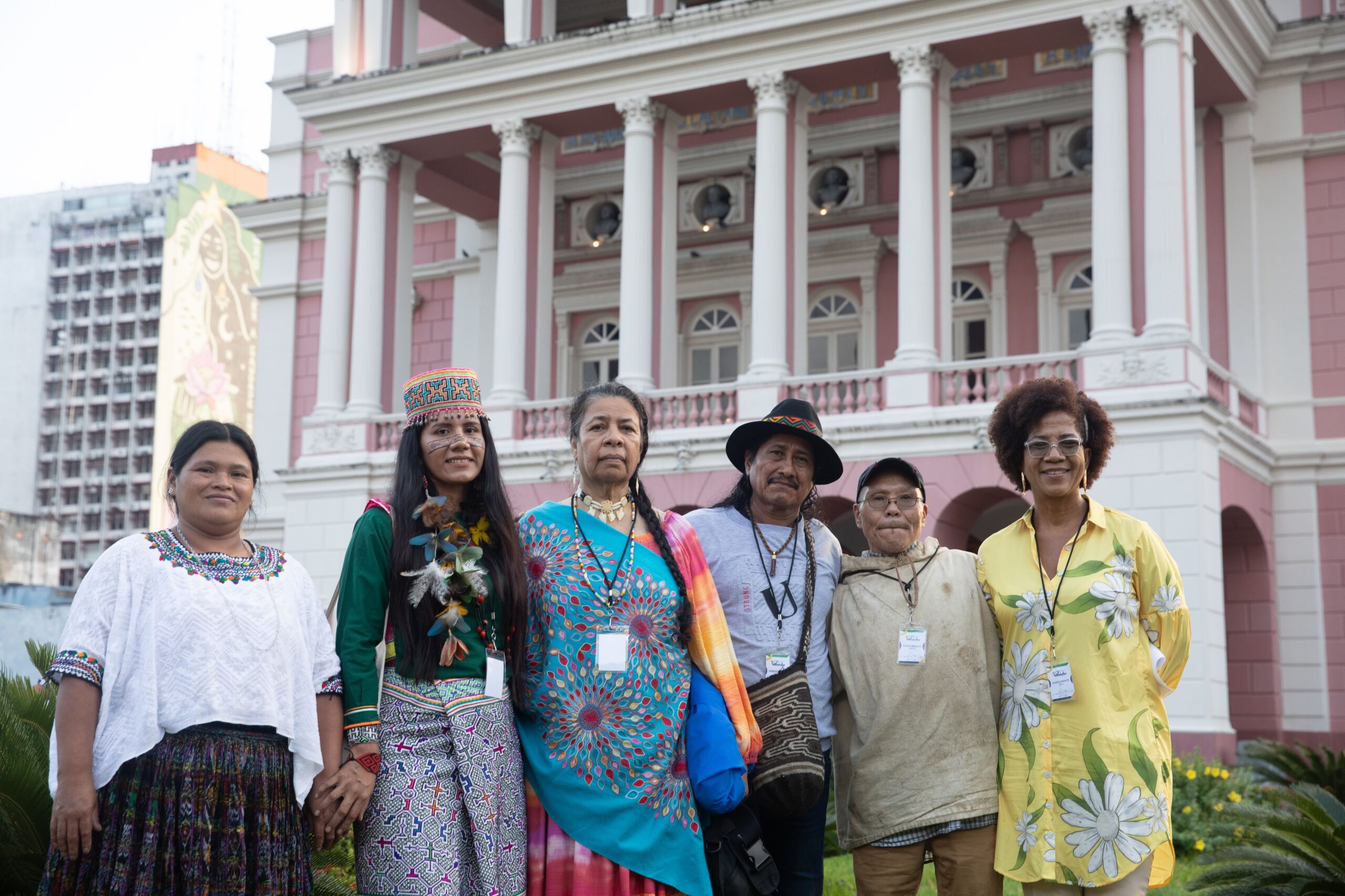Understanding the IACtHR Advisory Opinion on Climate Change – Earth.Org

Report on the Inter-American Court of Human Rights Advisory Opinion on the Climate Emergency and Human Rights
Executive Summary
On July 3, 2025, the Inter-American Court of Human Rights (IACtHR) issued a landmark advisory opinion, OC-32/25, clarifying state obligations in the context of the climate emergency. The opinion establishes a robust legal framework that integrates human rights with climate action, significantly advancing the principles underpinning the Sustainable Development Goals (SDGs). This report analyzes the key components of the opinion and its implications for international law and the pursuit of the 2030 Agenda, with a particular focus on SDG 13 (Climate Action) and SDG 16 (Peace, Justice and Strong Institutions).
Key Findings of the Advisory Opinion
1. Establishment of Environmental Protection as a Peremptory Norm (Jus Cogens)
The Court’s most revolutionary finding is the recognition that the obligation to prevent significant and irreversible harm to the environment constitutes a jus cogens norm. This elevates environmental and climate protection to the highest level of international law, making it a non-derogable obligation for all states.
- Implication for SDGs: This decision provides a powerful legal foundation for SDG 13 (Climate Action), transforming climate commitments from political discretion into a fundamental, legally binding duty. It strengthens global governance and the rule of law, directly supporting the objectives of SDG 16 (Peace, Justice and Strong Institutions).
2. A Human Rights-Based Framework for Climate Action
The opinion firmly establishes the “human rights-environment nexus,” asserting that a stable climate and healthy environment are prerequisites for the enjoyment of all human rights. Climate action must therefore be designed to protect and fulfill these rights.
- Right to Life, Health, and Well-being: The Court links climate change directly to threats against the rights to life and personal integrity, reinforcing the aims of SDG 3 (Good Health and Well-being).
- Right to Food and Water: The opinion acknowledges that climate impacts undermine the rights to adequate food and water, aligning with SDG 2 (Zero Hunger) and SDG 6 (Clean Water and Sanitation).
- Procedural Rights: It emphasizes that a rights-based approach must include transparency, accountability, and public participation, which are core tenets of SDG 16.
3. Emphasis on Climate Justice and Equality
The IACtHR recognized that the burdens of climate change fall disproportionately on marginalized and vulnerable populations, including Indigenous peoples, low-income communities, women, and children. The opinion mandates that climate policies must prioritize the protection of these groups.
- Implication for SDGs: This focus on equity is central to the 2030 Agenda’s pledge to “leave no one behind.” It directly addresses the targets of SDG 10 (Reduced Inequalities), SDG 5 (Gender Equality), and SDG 1 (No Poverty) by demanding that climate responses are socially just and inclusive.
4. Recognition of an Independent Right to a Healthy Climate
The Court went beyond the general right to a healthy environment to establish a distinct and autonomous human right to a healthy, stable climate system. This provides a more direct and specific legal basis for climate-related claims.
- Implication for SDGs: By creating a specific legal right, the Court empowers individuals and communities to hold states accountable for climate inaction, thereby creating a new mechanism to drive progress on SDG 13 and strengthen the justice component of SDG 16.
5. Mandate for Urgent Action and Systemic Resilience
The opinion calls for “urgent and effective actions” to mitigate emissions and adapt to climate impacts. It frames this action through the “prism of resilience,” defined as the capacity of systems and societies to withstand shocks while advancing sustainable development.
- Mitigation Urgency: Citing scientific evidence on the “emissions gap,” the Court underscores the necessity of immediate and ambitious action to meet the goals of the Paris Agreement, a key component of SDG 13.
- Building Resilience: The focus on resilience aligns with SDG 11 (Sustainable Cities and Communities) and the broader goal of creating societies that can adapt to climate change without compromising long-term development, peace, and human rights.
6. Legal Personality of Nature
In a significant, albeit narrow, decision, the Court recognized the legal personality of nature as a component of the right to a healthy environment. This shifts the legal paradigm from viewing nature as a resource to an entity with rights.
- Implication for SDGs: This recognition provides a strong legal basis for the protection of ecosystems, directly supporting the objectives of SDG 14 (Life Below Water) and SDG 15 (Life on Land) by acknowledging nature’s intrinsic value and its foundational role in sustaining life.
Conclusion and Normative Impact
The IACtHR’s advisory opinion OC-32/25 represents a paradigm shift in international law. While not a binding ruling on a specific case, its interpretive authority is expected to guide domestic courts, shape state policies, and strengthen the global consensus on climate action. By framing climate obligations as fundamental human rights duties, the opinion provides a powerful legal and moral impetus for states to accelerate their efforts to achieve the Sustainable Development Goals, particularly SDG 13 and SDG 16, ensuring that climate action is not only effective but also just, equitable, and rights-based.
Analysis of the Article in Relation to Sustainable Development Goals
1. Which SDGs are addressed or connected to the issues highlighted in the article?
-
SDG 13: Climate Action
- The entire article is centered on the “climate emergency” and the need for “urgent and effective” climate action. It discusses the legal obligations of states regarding climate mitigation and adaptation, directly addressing the core of SDG 13. The text references the “emissions gap” and the catastrophic consequences of unchanged policy trajectories, reinforcing the urgency of climate action.
-
SDG 16: Peace, Justice and Strong Institutions
- The article focuses on the role of a judicial institution, the Inter-American Court of Human Rights (IACtHR), in strengthening international law. By declaring the obligation to prevent climate harm a jus cogens norm, the court enhances the rule of law. It also establishes a “clear and direct foundation for climate-related human rights claims,” which promotes access to justice. The discussion on transparency, accountability, and participation as key principles for climate action also aligns with building effective and accountable institutions.
-
SDG 10: Reduced Inequalities
- The “Climate Justice” section explicitly states that climate change disproportionately affects marginalized groups, including “Indigenous peoples, low-income communities, women, children.” It argues that meaningful climate policy must prioritize the protection of these vulnerable populations, directly addressing the goal of reducing inequality.
-
SDG 3: Good Health and Well-being
- The article highlights the “human rights-environment nexus,” stating that ecosystem preservation is essential for the enjoyment of fundamental human rights, specifically naming the rights to “life, personal integrity, health, and non-discrimination.” This directly connects climate stability to human health and well-being.
-
SDG 15: Life on Land
- The article discusses the obligation to prevent “irreversible harm to the environment and climate” and “irreversible damage to planetary ecosystems.” It also covers the court’s decision to recognize the “legal personality of nature,” treating it as a rights-bearing entity rather than a resource. This aligns with the goal of protecting terrestrial ecosystems and halting biodiversity loss.
2. What specific targets under those SDGs can be identified based on the article’s content?
-
Under SDG 13 (Climate Action):
- Target 13.1: Strengthen resilience and adaptive capacity to climate-related hazards and natural disasters in all countries. The article emphasizes action “under the prism of resilience” and quotes the UN’s definition of resilience as the capacity to “adapt, respond and recover” from risks.
- Target 13.2: Integrate climate change measures into national policies, strategies and planning. The advisory opinion is described as redefining “climate action as a human rights obligation, not a matter of political discretion,” compelling states to integrate these obligations into their legal and policy frameworks.
-
Under SDG 16 (Peace, Justice and Strong Institutions):
- Target 16.3: Promote the rule of law at the national and international levels and ensure equal access to justice for all. The article details how the court’s opinion strengthens international law and provides a legal foundation for individuals to “seek climate action in a more focused and autonomous manner.”
- Target 16.7: Ensure responsive, inclusive, participatory and representative decision-making at all levels. The article mentions that key human rights principles for climate action include the “rights to participate and access information” and praises “Indigenous-led approaches” for their inclusivity.
-
Under SDG 10 (Reduced Inequalities):
- Target 10.3: Ensure equal opportunity and reduce inequalities of outcome, including by eliminating discriminatory laws, policies and practices. The article’s focus on “Climate Justice” directly addresses this by highlighting that climate change creates “extraordinary and increasingly serious risks” for vulnerable groups due to “intersectional and structural factors of discrimination.”
-
Under SDG 15 (Life on Land):
- Target 15.9: By 2020, integrate ecosystem and biodiversity values into national and local planning, development processes, poverty reduction strategies and accounts. The court’s recognition of “nature as a rights-bearing entity” is a profound example of integrating nature’s intrinsic value into a legal framework.
3. Are there any indicators mentioned or implied in the article that can be used to measure progress towards the identified targets?
-
For Target 13.2:
- The article explicitly mentions the “emissions gap” and cites quantitative data from the UN Environment Programme on projected global temperature rise. It states, “there is a 10% likelihood that global temperatures will rise above 3.6C… and a 66% probability of reaching up to 3.1C by century’s end.” These temperature projections and the underlying greenhouse gas concentrations serve as direct indicators of progress (or lack thereof) in integrating effective climate policies. This relates to official indicator 13.2.2 (Total greenhouse gas emissions per year).
-
For Target 16.3:
- An implied indicator is the number of climate-related human rights claims filed in domestic and international courts that reference the IACtHR’s advisory opinion. The article suggests this will increase by stating the opinion provides a “clear and direct foundation for climate-related human rights claims.”
-
For Target 13.1 and 16.7:
- An implied indicator is the adoption of policies that are explicitly “resilience-driven” and incorporate “Indigenous-led approaches.” The article contrasts these favorably with “top-down conservation efforts,” suggesting a shift towards these more inclusive and effective strategies would be a measure of progress.
4. Table of SDGs, Targets, and Indicators
| SDGs | Targets | Indicators |
|---|---|---|
| SDG 13: Climate Action | Target 13.1: Strengthen resilience and adaptive capacity to climate-related hazards.
Target 13.2: Integrate climate change measures into national policies. |
Mentioned: Projections of global temperature rise (e.g., “up to 3.1C by century’s end”) based on the “emissions gap.”
Implied: Adoption of “resilience-driven” strategies in national policies. |
| SDG 16: Peace, Justice and Strong Institutions | Target 16.3: Promote the rule of law and ensure equal access to justice.
Target 16.7: Ensure responsive, inclusive, and participatory decision-making. |
Implied: The number of climate-related human rights claims filed based on the court’s opinion.
Implied: The degree to which “Indigenous-led approaches” and public participation are incorporated into climate policy. |
| SDG 10: Reduced Inequalities | Target 10.3: Ensure equal opportunity and reduce inequalities of outcome for vulnerable groups. | Implied: Development and implementation of climate policies that explicitly prioritize the protection of marginalized communities mentioned in the article (Indigenous peoples, low-income communities, women, children). |
| SDG 3: Good Health and Well-being | Connection to the right to “health” and “life” through the “human rights-environment nexus.” | Implied: National legal frameworks recognizing the link between a stable climate and the right to health. |
| SDG 15: Life on Land | Target 15.9: Integrate ecosystem and biodiversity values into national planning. | Implied: The number of states that legally recognize “nature as a rights-bearing entity” within their jurisdictions, following the court’s precedent. |
Source: earth.org

What is Your Reaction?
 Like
0
Like
0
 Dislike
0
Dislike
0
 Love
0
Love
0
 Funny
0
Funny
0
 Angry
0
Angry
0
 Sad
0
Sad
0
 Wow
0
Wow
0








































































